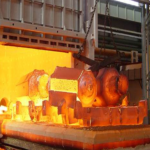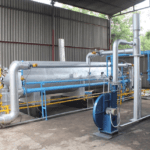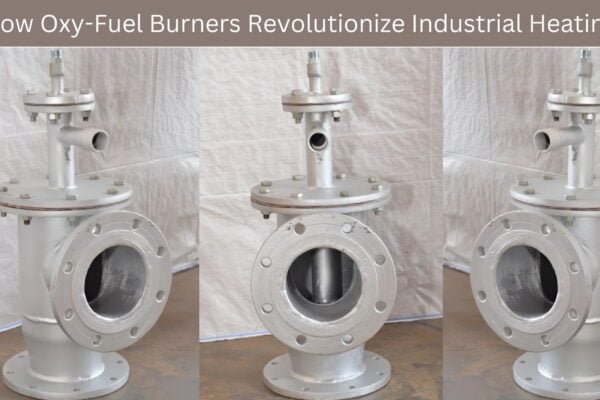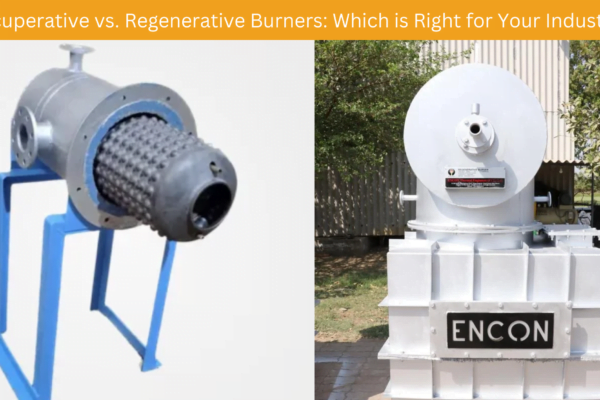Heat exchangers are devices that transfer heat from one fluid to another fluid without the fluids coming into direct contact. They are used in various industries such as power plants, chemical plants, and HVAC systems. There are several types of heat exchangers, each with its unique design and characteristics.
There are many different types of heat exchangers, each with its unique design and applications. In this blog post, we’ll take a closer look at the different types of heat exchangers and their characteristics.
1. Shell and Tube Heat Exchangers
Shell and tube heat exchangers are the most commonly used type of heat exchangers. As their name suggests, they consist of a cylindrical shell with a bundle of tubes inside. One fluid flows through the tubes, while the other fluid flows around the tubes in the shell. The two fluids are separated by a tube wall, which facilitates heat transfer.
Shell and tube heat exchangers are suitable for high-pressure and high-temperature applications, making them ideal for use in power plants, oil refineries, and chemical plants. They are also suitable for applications that require a high degree of cleanliness and sterilization, such as in the pharmaceutical and food industries.
Shell and tube heat exchangers come in several different configurations, including:
• U-tube: This type of heat exchanger has a U-shaped tube bundle, which allows for thermal expansion and contraction without damaging the tube walls.
• Fixed tube sheet: In this configuration, the tube bundle is fixed to the shell, and the tube sheet acts as a barrier between the two fluids.
• Floating head: This design allows for the tube bundle to expand and contract without damaging the shell or the tube sheet. The head is bolted to the shell, allowing for easy removal for maintenance and cleaning.
2. Plate Heat Exchangers
Plate heat exchangers consist of a series of thin, corrugated plates that are stacked together with a small gap between them. The two fluids flow through alternate channels created by the plates. The corrugations on the plates create turbulence in the fluids, which enhances heat transfer.
Plate heat exchangers are compact, efficient, and cost-effective. They are commonly used in HVAC systems, food and beverage processing, and the pharmaceutical industry. Because of their compact design, plate heat exchangers require less space than other types of heat exchangers, making them ideal for use in tight spaces.
Plate heat exchangers come in several different configurations, including:
• Gasketed plate: In this type of heat exchanger, the plates are held together by a gasket, which creates a seal between the plates and ensures that the fluids do not mix.
• Brazed plate: In this configuration, the plates are brazed together, which creates a strong bond between the plates and eliminates the need for a gasket.
• Welded plate: This type of heat exchanger uses welded plates, which creates a strong and durable bond between the plates. However, this design can be more expensive than other configurations.
3. Air Cooled Heat Exchangers
Air-cooled heat exchangers (ACHE) are used in applications where water or other cooling fluids are not available or not desirable. They consist of finned tubes that are exposed to the surrounding air. One fluid flows through the tubes, while the other fluid flows around the tubes, which are cooled by the ambient air.
ACHEs are commonly used in refineries, petrochemical plants, and natural gas processing facilities. They are also suitable for use in remote locations or in areas with limited access to water.
ACHEs come in several different configurations, including:
• Forced draft: In this configuration, fans are used to force air over the finned tubes
• Induced draft: In this configuration, fans are used to draw air through the finned tubes
• Natural draft: In this configuration, the heated fluid is allowed to rise naturally through the finned tubes, creating a draft that pulls air through the tubes.
4. Plate-Fin Heat Exchangers
Plate-fin heat exchangers consist of a series of flat plates that are arranged in a stack and separated by corrugated fins. The two fluids flow through alternate channels created by the plates and fins. The corrugations on the fins create turbulence in the fluids, which enhances heat transfer.
Plate-fin heat exchangers are suitable for high-pressure and high-temperature applications, making them ideal for use in aerospace, cryogenics, and oil and gas processing. They are also suitable for applications that require a high degree of compactness and lightness, such as in aircraft and automobiles.
Plate-fin heat exchangers come in several different configurations, including:
• Brazed aluminum: In this configuration, the plates and fins are brazed together using a filler material, creating a strong and durable bond between the components.
• Welded aluminum: This type of heat exchanger uses welded plates and fins, which creates a strong and durable bond between the components. However, this design can be more expensive than other configurations.
5. Spiral Heat Exchangers
Spiral heat exchangers consist of two concentric spiral channels, with one fluid flowing through the inner channel and the other fluid flowing through the outer channel. The two fluids are separated by a thin layer of metal, which facilitates heat transfer.
Spiral heat exchangers are suitable for applications that require high turbulence and high heat transfer rates, such as in the chemical and food industries. They are also suitable for applications that require a high degree of compactness, as spiral heat exchangers take up less space than other types of heat exchangers.
Spiral heat exchangers come in several different configurations, including:
• Single channel: In this configuration, the two fluids flow in opposite directions through a single spiral channel.
• Double channel: In this configuration, the two fluids flow in the same direction through two separate spiral channels, which are stacked on top of each other.
Some other factors to consider when selecting a heat exchanger include:
• Flow rates: The flow rate of the fluids passing through the heat exchanger affects the heat transfer rate and the pressure drops across the system. Higher flow rates can increase the heat transfer rate, but can also increase the pressure drop and pumping costs.
• Temperature range: The temperature range of the fluids being heated or cooled can affect the materials selection and the design of the heat exchanger. For example, some materials may not be suitable for use at high temperatures, while others may corrode or degrade when exposed to certain chemicals or fluids.
• Pressure range: The pressure range of the fluids being heated or cooled can affect the materials selection and the design of the heat exchanger. Some heat exchangers may require thicker walls or stronger materials to handle high-pressure applications.
• Maintenance requirements: The maintenance requirements of the heat exchanger can affect the overall cost and downtime of the system. Heat exchangers that are easily accessible and require less maintenance can be more cost-effective in the long run.
Overall, selecting the right type of heat exchanger for a given application can be complex and requires careful consideration of multiple factors. It is important to consult with experienced professionals who can help evaluate the specific requirements of the system and recommend the most appropriate heat exchanger design.
Heat exchangers play a vital role in many industrial processes and systems. There are many different types of heat exchangers, each with its unique design and applications. Choosing the right type of heat exchanger depends on several factors, including the type of fluids being used, the temperature and pressure requirements, and the space limitations of the application. Understanding the different types of heat exchangers and their characteristics is essential for selecting the most appropriate heat exchanger for a given application.
In addition, advancements in materials science and manufacturing technologies have led to the development of newer and more efficient heat exchangers that can handle a wider range of applications.






